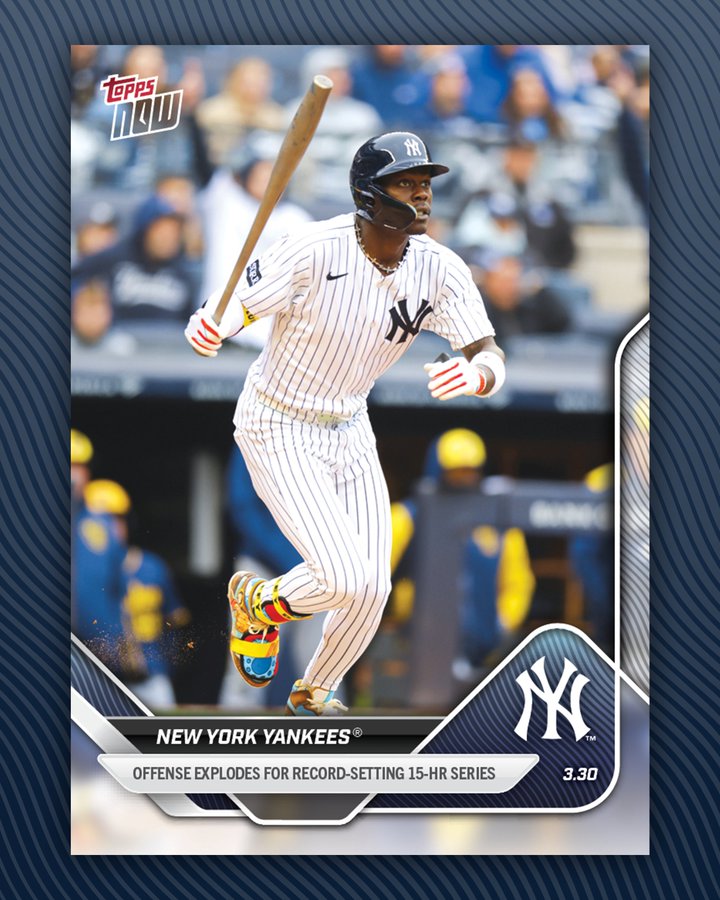If baseball had a soundtrack for its current season, it would undoubtedly include the distinct crack of a bat followed by cheers reverberating through packed stadiums. As the game evolves, so do its tools, and for baseball card collectors, this evolution could not be any more thrilling—or lucrative. Enter the torpedo bat, the newest sensation in Major League Baseball that’s rapidly turning stadiums into launchpads and igniting a frenzy in the card collecting community.
What are these modern marvels? Torpedo bats are not your average pieces of lumber. They’re sleek, meticulously crafted, and shaped to maximize the ball’s exit velocity. With each swing, they promise moonshots and record-breaking home runs, much to the delight of those who thrive on the game’s slugfest aspect. Their name, “torpedo,” evokes images of projectiles cutting through the air, much like the homers they propel into the stands.
This season, the Milwaukee Brewers became inadvertent witnesses to the torpedo bat’s prowess during their ill-fated encounter with the New York Yankees. Over the course of their opening series, the Yankees blasted a staggering 15 home runs, including an eye-popping nine in a single game. It’s safe to say that the Brewers’ pitchers are mulling over career plans that perhaps involve less public humiliation.
While pitchers scramble to redesign their strategies, card collectors have found a silver lining. As torpedo bats command headlines, players wielding them see their collectible cards shooting up in value. Aaron Judge, for instance, has seen his card prices soar. Surprisingly, Judge hasn’t switched to the new bat—yet the mere association with his team’s pyrotechnics has investors salivating. Collectors are banking on home runs, and as the long balls sail, so do the profits.
The torpedo wave does have an undertow, however. Historically, the balance between pitchers and hitters has seen card values swing back and forth, but the current climate hints that pitchers could see a devaluation in their cardboard personas. Last season’s National League Rookie of the Year, Paul Skenes, may find his card value drops as hitters dominate the highlight reels. Similarly, young prospects like Detroit Tigers’ Jackson Jobe and the Dodgers’ Roki Sasaki may want to fetch a different narrative or brace themselves for an uncertain market.
Yet, standing nearly mythic amidst this tectonic shift is Shohei Ohtani, the two-way sensation who effortlessly captivates audiences as both a pitcher and hitter. With the torpedo bats in the mix, one can only imagine the astronomical heights his batting achievements could reach. Ohtani has always dazzled as a pitcher, but there’s plenty of allure in swinging for the fences, particularly with tools as potent as the torpedoes. Dodgers fans and card collectors alike find themselves collectively holding their breath and cash, hoping Ohtani lends his magic to this offensive arms race.
There lies an undeniable romance in nostalgia for the traditional pace and tactics of baseball, but this technological enhancement spurs excitement like no other. Manufacturers and bat scientists are quietly reveling as their creations become instant legends, while the players adapt and adjust with every swing (or miss).
While pitchers gird their reputations with additional caution and grit, hitters and their fans are reveling in this high-octane journey. Some traditionalists may turn their noses up at this power-focused version of baseball, longing for the days of strategic bunts and low-scoring duels. However, there is a fresh intensity in the air. Crowds gather in anticipation not just of any run scored but of witnessing titanic clashes between titans: plastic against leather, bat against ball, power against precision.
Conclusion this mirrors the colorful dynamism and depth of baseball’s unfolding tale—a story rich with mythic quests, magical tools, and heroes in the making. Baseball card collectors are poised at an intriguing juncture, as they consider both the risk of betting on futuristic bats and the safer bets on the traditional might of pitchers. As the season progresses, the torpedoes will continue to set the tone, and those tuned in will watch closely, collect eagerly, and savor every sound of that accelerating crack echoing the game’s eternal dance between history and innovation.


